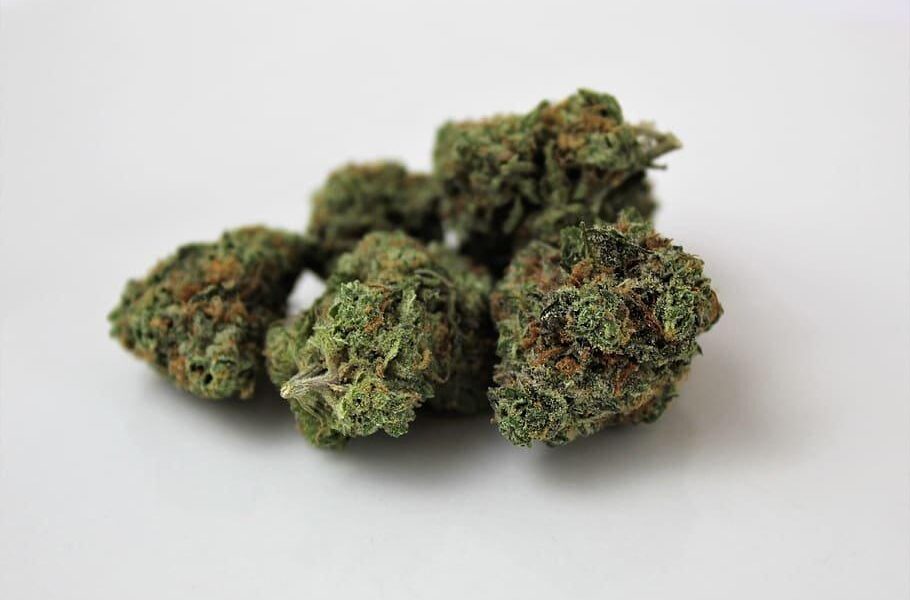Exploring the Green Enigma: What is Weed?
In the vast tapestry of human culture, few substances have sparked as much intrigue—and controversy—as cannabis, commonly known as weed. From ancient rituals to modern medicine, this unassuming plant has woven its way through the fabric of societies across the globe. But what exactly is weed? Is it merely a recreational escape, or does it hold the potential for therapeutic wonders? As we delve into the multifaceted world of cannabis, we’ll uncover its historical roots, scientific makeup, and evolving perceptions, inviting readers to navigate the complexities of this green enigma. Join us on a journey through the verdant landscapes of cannabis, where we seek to demystify its nature and significance in today’s world.
Table of Contents
- Exploring the Diverse Strains of Weed and Their Effects
- The Science Behind Cannabinoids: Understanding THC and CBD
- Legal Landscape and Social Implications of Marijuana Use
- Practical Tips for Responsible Consumption and Growth Techniques
- Q&A
- Insights and Conclusions
Exploring the Diverse Strains of Weed and Their Effects
Within the vast world of cannabis, the varied strains create a broad tapestry of effects that can cater to different needs, preferences, and occasions. Many enthusiasts and patients alike delve into the unique characteristics of each strain, as understanding these nuances can significantly enhance the experience. The major categories of cannabis strains—Indica, Sativa, and Hybrid—each bring forth distinct traits:
- Indica: Known for its soothing and relaxing properties, often recommended for nighttime use.
- Sativa: Generally uplifting and energizing, making it favorable for daytime activities or creative endeavors.
- Hybrid: A balanced blend, these strains can offer a mix of both Indica and Sativa effects, catering to a wider audience.
Delving deeper, specific strains exhibit unique benefits that can aid individuals differently. For example, the popular strain OG Kush is known for its potent euphoric effects, while Granddaddy Purple is often favored for its deep relaxation and pain relief properties. Here’s a quick overview of popular strains and their common effects:
| Strain | Type | Common Effects |
|---|---|---|
| OG Kush | Hybrid | Euphoria, Stress Relief |
| Granddaddy Purple | Indica | Relaxation, Pain Relief |
| Jack Herer | Sativa | Energizing, Creativity |
The Science Behind Cannabinoids: Understanding THC and CBD
The world of cannabis is intricate, largely due to two primary compounds: THC (tetrahydrocannabinol) and CBD (cannabidiol). While both are cannabinoids, they elicit significantly different effects in the human body. THC is known for its psychoactive properties, providing the euphoric high often associated with marijuana use. It interacts with the endocannabinoid system by binding to CB1 receptors in the brain, which can lead to altered perception, mood changes, and an increase in appetite. In contrast, CBD is non-psychoactive and is celebrated for its potential therapeutic benefits, promoting relaxation without the high. This distinction allows users to seek various experiences depending on their cannabinoid preference.
Understanding how these cannabinoids work requires delving into their chemical structure and how they interact with the human body. Here’s a simple comparison of their key features:
| Feature | THC | CBD |
|---|---|---|
| Psychoactive | Yes | No |
| Medical Benefits | Pain relief, nausea reduction | Anxiety relief, anti-inflammatory |
| Legality | Varies by region | More widely accepted |
Both THC and CBD offer unique benefits and experiences, making them valuable components of cannabis. As research continues, more potential applications in health and wellness are likely to emerge, shedding light on how these cannabinoids can enhance our well-being in diverse ways.
Legal Landscape and Social Implications of Marijuana Use
The legal landscape surrounding marijuana use is evolving rapidly across the globe, with various countries and states implementing increasingly liberal laws. As of now, many jurisdictions have decriminalized or legalized cannabis for recreational, medicinal, or both purposes. This shift has highlighted significant discrepancies in the regulatory frameworks that govern marijuana, often leading to confusion and inequality. Different approaches can include:
- Full Legalization: Some places allow both recreational and medicinal use.
- Decriminalization: Possession of small amounts may not result in criminal charges.
- Strict Medicinal Use Only: Access is often limited to patients with specific medical conditions.
Beyond the legal text, the societal implications of these changes are profound. As states implement new cannabis laws, they often must address the historical injustices tied to marijuana criminalization. Issues such as the disproportionate impact on minority communities and the need for equitable access to the cannabis industry are at the forefront of social discussions. These concerns have led to initiatives like:
- Expungement Programs: Allowing individuals with past convictions to clear their records.
- Minority Ownership Initiatives: Supporting marginalized communities in entering the cannabis market.
- Public Health Campaigns: Educating the public on safe use and potential risks associated with cannabis.
| State | Legal Status | Year Legalized |
|---|---|---|
| California | Recreational & Medicinal | 2016 |
| Colorado | Recreational & Medicinal | 2012 |
| New York | Recreational & Medicinal | 2021 |
Practical Tips for Responsible Consumption and Growth Techniques
Embracing responsible consumption when it comes to cannabis can lead to a more sustainable and enjoyable experience for both the user and the environment. Here are some practical tips to consider:
- Educate Yourself: Understanding the different strains and their effects can enhance your experience and reduce waste.
- Choose Quality Over Quantity: Invest in high-quality products that have been sourced responsibly.
- Go Organic: Opt for organic options to minimize harm to the environment and promote healthier consumption.
- Mindful Dosing: Start with small amounts and gradually increase to find the optimal effect without overindulgence.
In addition to responsible consumption, adopting certain growth techniques can enhance your gardening success while promoting eco-friendly practices. Here’s a concise look at best practices for cultivating cannabis:
| Growth Technique | Description |
|---|---|
| Companion Planting | Utilize beneficial plants that can enhance growth and protect against pests. |
| Organic Fertilizers | Use natural nutrients to promote soil health and plant vitality. |
| Water Conservation | Implement drip irrigation to reduce water waste and ensure optimal moisture levels. |
| Pruning Techniques | Regular pruning encourages healthy growth and maximizes yield. |
Q&A
Q&A: Understanding “Weed”
Q: What exactly is weed?
A: Commonly known as “weed,” cannabis refers to a genus of flowering plants that includes two primary species: Cannabis sativa and Cannabis indica. Typically, “weed” is associated with the dried flowers and leaves of the plant, which are often consumed for their psychoactive effects or medicinal properties.
Q: Why do people use weed?
A: People use weed for various reasons. Some seek the psychoactive effects primarily associated with THC (tetrahydrocannabinol), which can induce feelings of euphoria, relaxation, and altered perception. Others use it for potential therapeutic benefits, such as pain relief, anxiety reduction, or treatment of certain medical conditions.
Q: Is weed legal everywhere?
A: The legality of weed varies widely around the world. In some places, it is fully legalized for recreational and medicinal use; in others, it remains strictly prohibited. Additionally, many regions have established medical cannabis programs, allowing individuals with specific conditions to use the plant under regulated circumstances.
Q: What are the different forms of weed?
A: Weed comes in various forms, including dried flower, oils, edibles, tinctures, and concentrates. Dried flowers can be smoked or vaporized, while edibles are food products infused with cannabis extracts. Concentrates, such as wax and shatter, are highly potent forms extracted from the plant.
Q: Can weed have negative effects?
A: Like any substance, weed can have negative effects, particularly when used excessively or by individuals who are sensitive to its compounds. Potential adverse effects include anxiety, paranoia, impaired cognitive function, and physical coordination issues. It’s always wise for users to be aware of their own limits and the context in which they consume.
Q: How do people typically consume weed?
A: Consumption methods for weed can vary. Common methods include smoking joints or pipes, using vaporizers, consuming edibles, and employing tinctures or oils. Each method may produce different onset times and durations of effects, so users often choose according to their preferences and experiences.
Q: What is the role of cannabis in culture?
A: Cannabis has played a significant role in various cultures throughout history, from spiritual and ritualistic uses to artistic expression. Today, it has a prominent presence in contemporary culture, influencing music, art, and lifestyle trends while sparking discussions about social justice, health, and legality.
Q: Are there health risks associated with long-term weed use?
A: Long-term use of weed can pose certain health risks. Research suggests potential cognitive impairments, respiratory issues from smoking, and dependence in some users. However, ongoing research continues to explore the complexities of how cannabis affects individual health and well-being.
Q: What does the future of weed look like?
A: The future of weed appears to be steadily evolving. As societal views on cannabis shift and more places consider legalization, ongoing research may lead to a better understanding of its benefits and risks. This evolution promises to shape policy decisions, medical developments, and cultural perceptions surrounding weed for years to come.
Whether celebrated or debated, “weed” remains a complex and multifaceted topic that invites curiosity, conversation, and continued exploration.
Insights and Conclusions
the multifaceted nature of cannabis—often simply referred to as “weed”—invites a deeper exploration beyond its common stereotypes. From its historical uses to its contemporary medicinal applications, cannabis serves as a bridging thread through various cultures and conversations. Whether you view it as a recreational escape, a therapeutic aid, or a subject of social and legal debate, one thing remains clear: weed is more than just a plant; it’s a catalyst for change, understanding, and connection. As we continue to unravel the complexities surrounding cannabis, we cultivate a more informed dialogue that can shape its future in society. The journey of understanding “weed” is ongoing, and its narrative is still being written—one story at a time.


